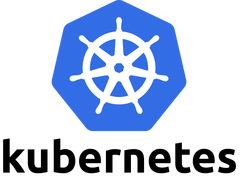
Containerisation as a development model has been growing as an approach for a few years. If you work as a developer or a system architect then you have almost certainly...
When running Kubernetes clusters in the cloud, one of the benefits is that you can use multiple providers and get the benefits of each. It's also useful to be able to deploy to different regions around the world to offer your applications to customers in different countries without lag.
However, this also introduces some additional challenges when it comes to monitoring your clusters. In this blog post, we will discuss some of the issues that you may encounter monitoring Kubernetes environments across multiple cloud providers and how to overcome them.
Microsoft Azure supports Kubernetes clusters in a number of regions around the world. You can use the Azure portal to create and manage your clusters, or you can use the Azure CLI or PowerShell. Additionally, there are a number of third-party monitoring tools that work with Kubernetes on Azure.
If you are using the Azure portal, you can find information about your clusters under the "Monitoring" blade. This will give you an overview of the health of your cluster and provide information on any nodes that are not healthy. You can also view logs and metrics for your cluster.
If you are using the Azure CLI or PowerShell, you can use the kube-monitor tool to get information on your clusters. This tool will provide you with an overview of the health of your cluster and allow you to view logs and metrics.
AWS supports Kubernetes clusters in a number of regions around the world. You can use the AWS console to create and manage your clusters, or you can use the AWS CLI or SDK. Additionally, there are a number of third-party monitoring tools that work with Kubernetes on AWS.
If you are using the AWS console, you can find information about your clusters under the "Monitoring" tab. This will give you an overview of the health of your cluster and provide information on any nodes that are not healthy. You can also view logs and metrics for your cluster.
If you are using the AWS CLI or SDK, you can use the kube-monitor tool to get information on your clusters. This tool will provide you with an overview of the health of your cluster and allow you to view logs and metrics.
If you have multiple Kubernetes clusters in different cloud providers, you will need to use a third-party monitoring tool that can monitor all of your clusters in one place or you can use the tools from each provider in each region. This can be a challenge because you will need to set up monitoring for each cluster in each cloud provider using their platform tools which is a different process for each one.
Using a third-party tool can remove this requirement and allow you to concentrate on the applications you are deploying with Kubernetes instead of managing and monitoring Kubernetes.
Yes, CloudOps is a Kubernetes monitoring tool that can monitor Kubernetes deployments in AWS and Azure. It provides a single pane of glass for managing and monitoring all of your Kubernetes clusters across different cloud providers.

Containerisation as a development model has been growing as an approach for a few years. If you work as a developer or a system architect then you have almost certainly...

With huge numbers of businesses moving their data storage over to the cloud, you’d be forgiven for thinking that it’s a reasonably straight-forward and simple process.